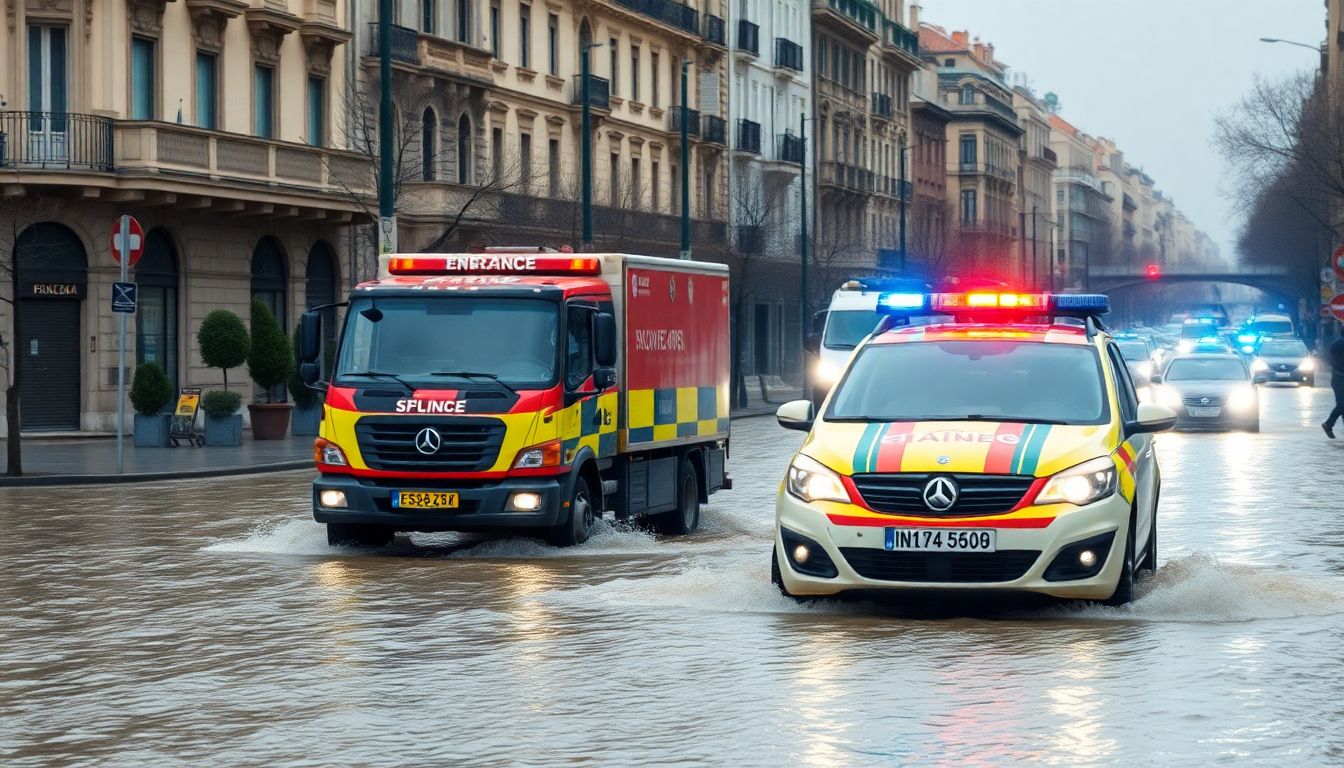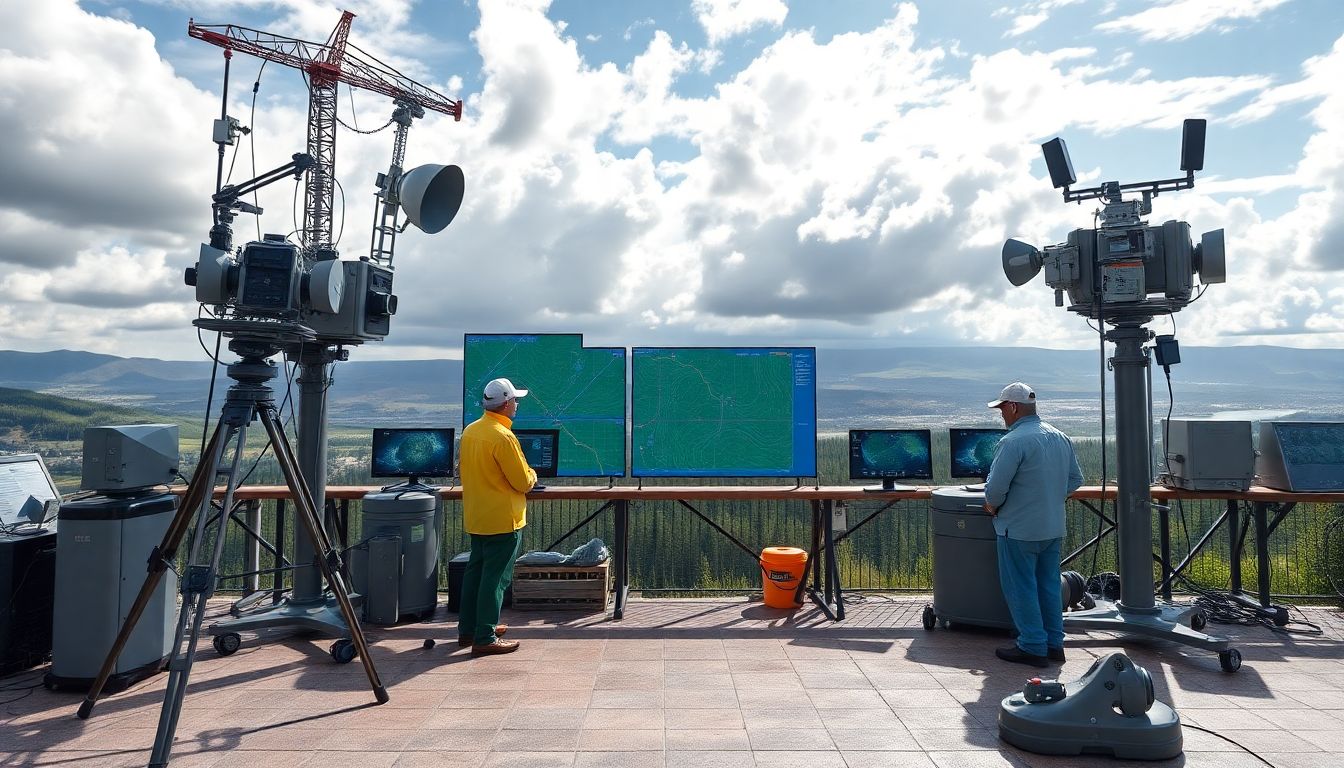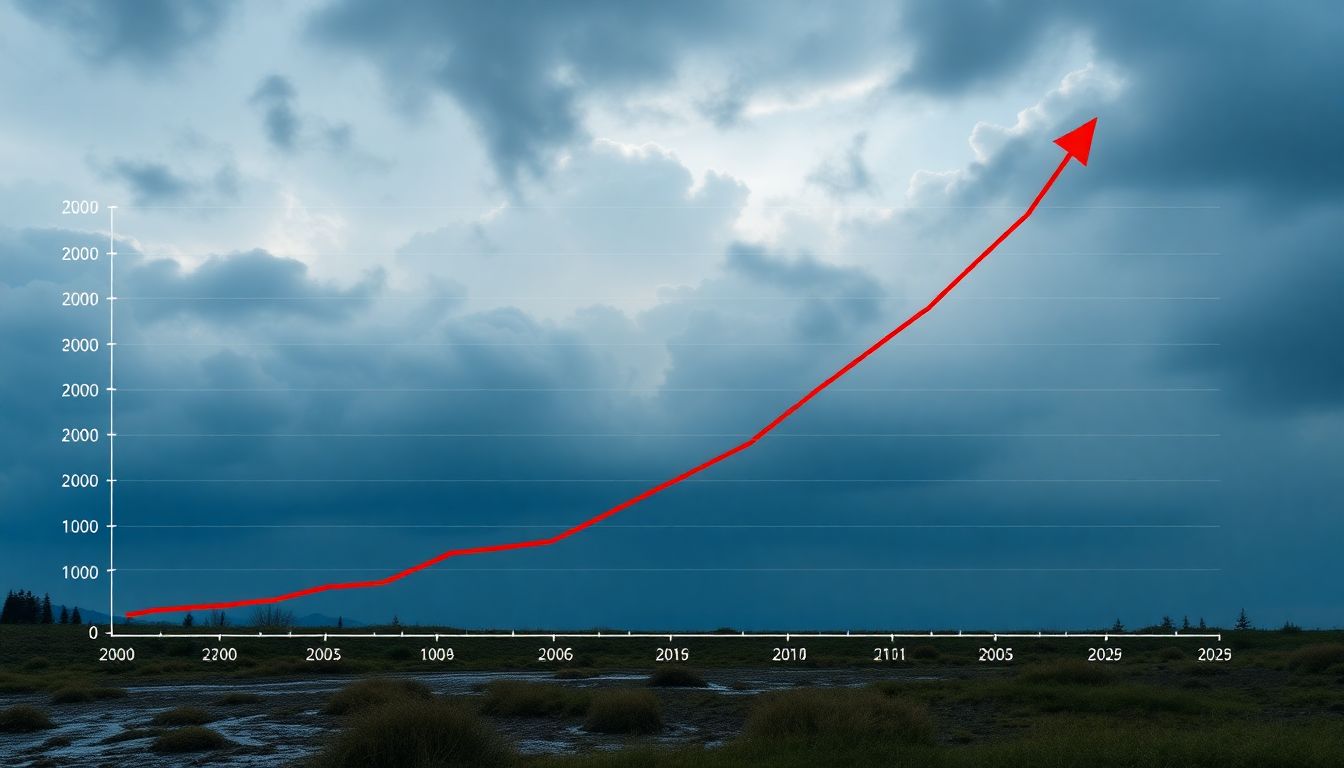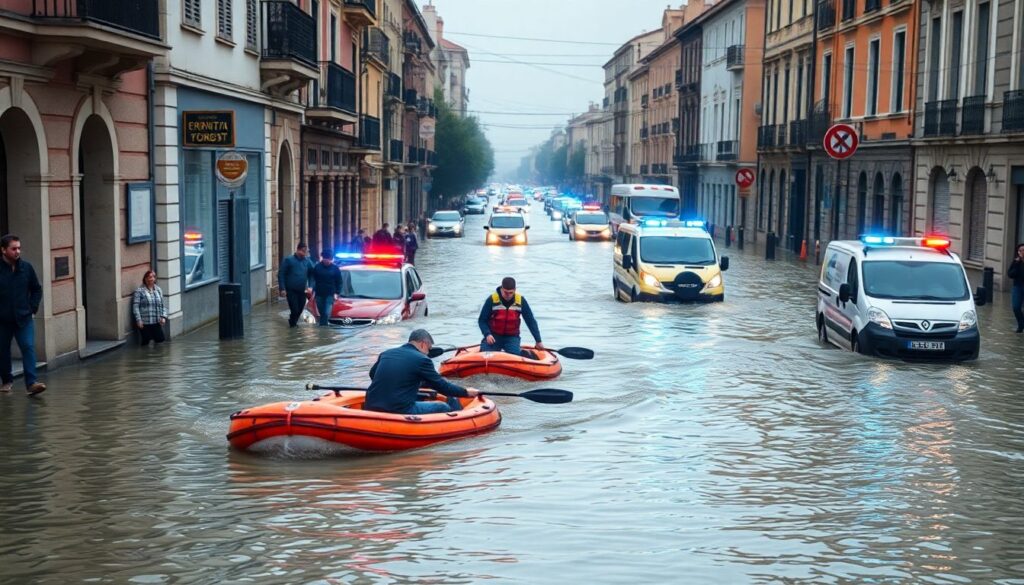Welcome to our in-depth exploration of the recent devastating rainfall that hit Spain, causing widespread flooding and significant loss of life. This article will delve into the meteorological phenomena behind the disaster, the impact on the region, and the role of climate change in exacerbating such events. Join us as we uncover the details and learn about the global efforts to mitigate such disasters.
A Comprehensive Look at the Recent Flooding in Spain and the Role of Climate Change
Imagine a scene in the heart of Spain, where a once bustling street is now a raging river, the result of an unprecedented downpour. The usually vibrant shops and cafes are barely visible, their signs peeking out from the murky waters. This is no ordinary rainstorm; it’s a deluge that has turned the city into a sprawling lake.
Emergency sirens wail in the distance, their echoes bouncing off the submerged buildings. The usually narrow cobblestone streets are now navigable only by boats, as emergency services row frantically, their vessels filled with people plucked from rooftops and balconies. The rescuers’ faces are etched with determination, their uniforms soaked through, as they battle against the relentless rain and swift currents.
The severity of the disaster is starkly evident in the faces of those being rescued. Children cling to their parents, their eyes wide with fear and disbelief. Elderly residents, their lifetimes of memories submerged, are helped into the boats, their frail hands grasping at the outstretched arms of the rescuers. The usually lively chatter of the street is replaced by the urgent shouts of the emergency services, the splashing of oars, and the relentless drumming of the rain.

The Valencia Region: Ground Zero
The Valencia region has been battered by an unprecedented deluge, leaving residents reeling from the impact of heavy rainfall. The usually sun-kissed landscape has been transformed into a scene reminiscent of a waterworld, with streets turned into rivers and homes left isolated by floodwaters. The relentless downpour has caused widespread disruption, closing schools, cutting off power supplies, and forcing the evacuation of entire neighborhoods. The regional government has declared a state of emergency, urging residents to stay indoors and avoid unnecessary travel.
At the epicenter of this meteorological onslaught is Chiva, a small town near Valencia, which has witnessed record-breaking rainfall. The local weather station recorded a staggering 400 liters per square meter in just 24 hours, shattering previous records and surpassing the average annual rainfall in some parts of Spain. The sheer volume of water has overwhelmed local infrastructure, with drainage systems failing and rivers bursting their banks. The town’s historic center has been particularly hard hit, with water levels rising to knee-height in some places.
In response to the crisis, a massive rescue operation has been mounted, involving multiple agencies and volunteer groups. The Spanish Military Emergencies Unit has deployed teams to assist in evacuations and shore up damaged infrastructure. Firefighters, police, and civil protection personnel are working around the clock to ensure the safety of residents. Helicopters have been brought in to airlift people from cut-off areas, while boats have been navigating flooded streets to reach those in need.
The rescue operations have been hampered by the sheer scale of the flooding and the continued rainfall. Nevertheless, the response has been swift and coordinated, with authorities prioritizing the most vulnerable residents. Restoration of essential services is already underway, but the cleanup operation is expected to take weeks, if not months. As the rains begin to ease, the full extent of the damage is becoming clear. The Valencian community, however, has shown remarkable resilience, with neighbors helping neighbors and local businesses stepping up to support the recovery efforts.
- Schools have been turned into emergency shelters, providing refuge for those unable to return home.
- Local supermarkets have been distributing food and water to affected families.
- A fundraising campaign has been launched to support those who have lost their homes or businesses.
The road to recovery will be long and challenging, but the spirit of the Valencian people remains undaunted.

The Role of AEMET and WMO in Issuing Warnings
In the realm of emergency management, timely and accurate warnings are crucial. AEMET (Agencia Estatal de Meteorología), Spain’s meteorological agency, and the WMO (World Meteorological Organization) play pivotal roles in issuing these warnings. AEMET, with its advanced forecasting systems, monitors weather patterns and potential hazards round the clock. When severe weather conditions are anticipated, AEMET springs into action, compiling detailed reports and alerts. Similarly, the WMO, with its global network of meteorological services, facilitates the international exchange of data, ensuring that weather warnings are disseminated swiftly and efficiently across borders.
The process of issuing warnings involves several sophisticated steps. Both AEMET and WMO utilize complex modeling systems and real-time data to predict adverse events. Once a potential threat is identified, these agencies generate warnings that include the nature of the hazard, the areas likely to be affected, and the expected timeline. These warnings are then communicated to relevant authorities, media outlets, and the public through various channels, including television, radio, and mobile alerts.
The importance of a standardized alerting protocol cannot be overstated. This is where the Common Alerting Protocol (CAP) comes into play. CAP is an international standard for designing and issuing alerts and warnings. It ensures consistency and compatibility across different warning systems, enabling seamless communication between various agencies and countries. Here’s how CAP enhances emergency management:
-
Interoperability:
CAP allows different alerting systems to understand and process each other’s messages, ensuring that warnings are not lost in translation.
-
Speed and Accuracy:
By standardizing the format of alerts, CAP expedites the dissemination process, ensuring that vital information reaches those who need it most, when they need it most.
-
Flexibility:
CAP can be used for a wide range of hazards, from weather events to geological and technological disasters, making it a versatile tool in emergency management.
In emergency situations, every second counts. The collaboration between AEMET and WMO, bolstered by the Common Alerting Protocol, forms a robust defense against natural disasters. By providing clear, timely, and standardized warnings, these agencies empower individuals and communities to take swift and appropriate action, ultimately saving lives and mitigating the impact of catastrophic events.

Climate Change and Extreme Weather Events
Climate change, driven primarily by human activities such as burning fossil fuels and deforestation, is not just a future threat—it’s happening now, and one of the most tangible ways we experience it is through extreme weather events. The Intergovernmental Panel on Climate Change (IPCC), the United Nations body for assessing the science related to climate change, has been sounding the alarm on this issue for years.
According to the IPCC, global warming is making certain extreme weather events more likely and more severe. Here’s how:
- Heatwaves are becoming more frequent and severe in many regions. The IPCC reports that the frequency and duration of heatwaves have increased since the mid-20th century in large parts of Europe, Asia, and Australia.
- Heavy rainfall events are also on the rise. The IPCC has high confidence that human-induced climate change has contributed to an increase in the frequency and intensity of heavy precipitation events at the global scale.
- Droughts are becoming more intense and frequent in some regions. The IPCC notes that human-induced climate change has contributed to an increase in drought frequency and severity in the Mediterranean and West Asia since the mid-20th century.
- Tropical cyclones (hurricanes and typhoons) are expected to become more intense, with higher wind speeds and heavier rainfall, although their frequency may decrease or remain unchanged.
The IPCC’s reports are the work of hundreds of scientists from around the world who review and synthesize the latest climate research. They tell us that the chances of experiencing extreme heat, heavy downpours, and, in some regions, droughts, have already increased due to climate change. And without significant cuts to greenhouse gas emissions, these trends will continue.
So, what does this mean for us? It means that we need to prepare. Communities need to build resilience to these extreme weather events, and that might mean better infrastructure, early warning systems, and emergency response plans. It also means we need to act. We need to reduce our greenhouse gas emissions to slow down global warming and stabilize our climate. The IPCC makes it clear that every fraction of a degree of warming matters, and that every action we take now can make a difference.

The Science of Attribution and Future Predictions
Have you ever wondered how scientists determine the role of climate change in individual weather events? Enter the science of attribution, a powerful tool that helps us understand the influence of climate change on specific weather phenomena. Attribution is like detective work, where scientists investigate the fingerprints of climate change in extreme weather events, such as heatwaves, droughts, and storms.
The process of attribution involves comparing the probability of an event occurring in the current climate to the probability of it occurring in a world without human-induced climate change. This is typically done using complex models and statistical analyses. By doing so, scientists can quantify the extent to which climate change has made a particular event more likely or more severe.
One of the leading organizations in this field is World Weather Attribution, an international effort that brings together scientists from various institutions to provide real-time analyses of extreme weather events. Here’s how they do it:
- Collect observational data and model outputs for the specific event.
- Assess the trends and any changes in the frequency or intensity of similar events over time.
- Use climate models to simulate the event in both the actual world and a hypothetical world without human-induced climate change.
- Compare the results to determine the influence of climate change on the event.









